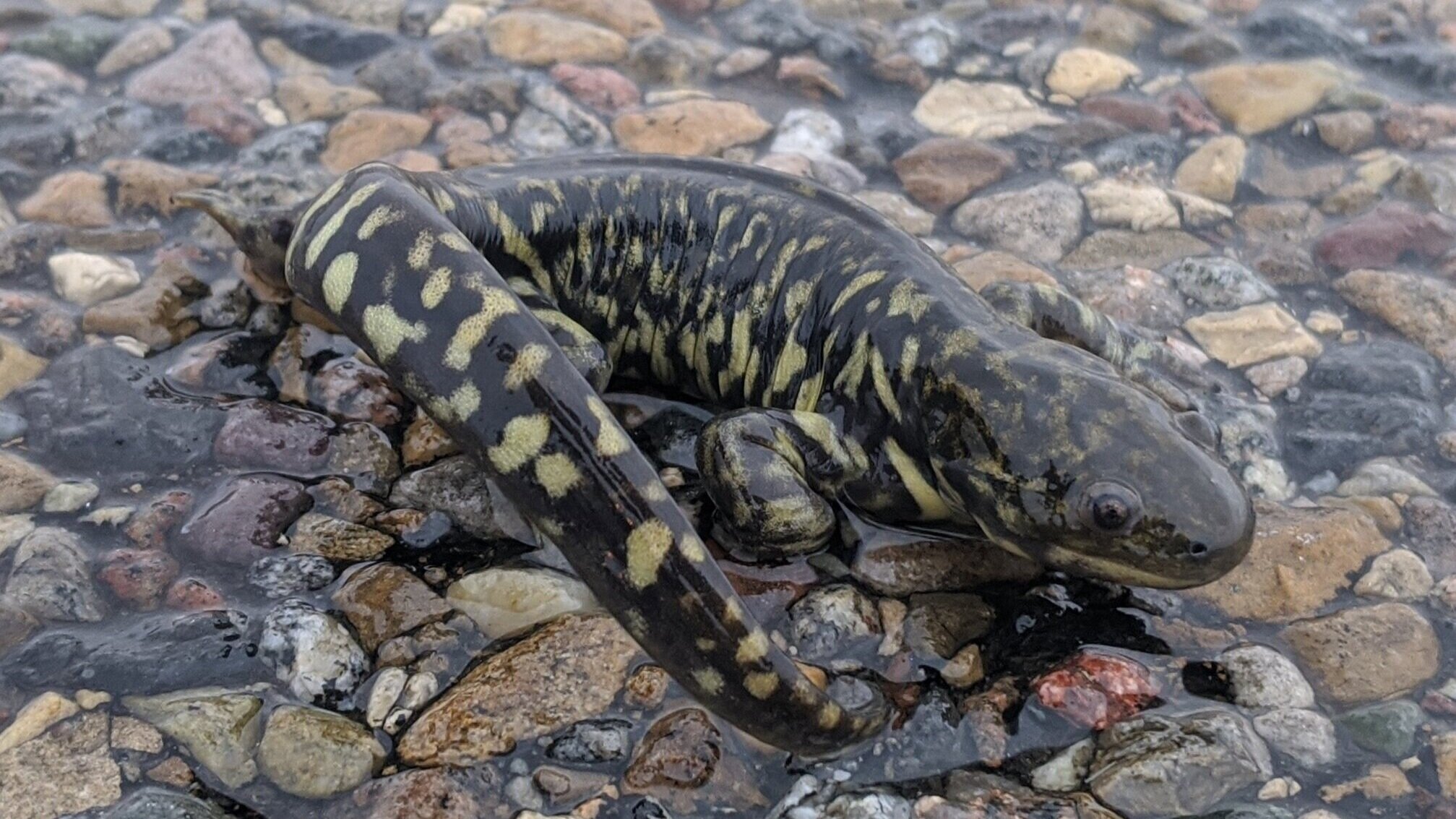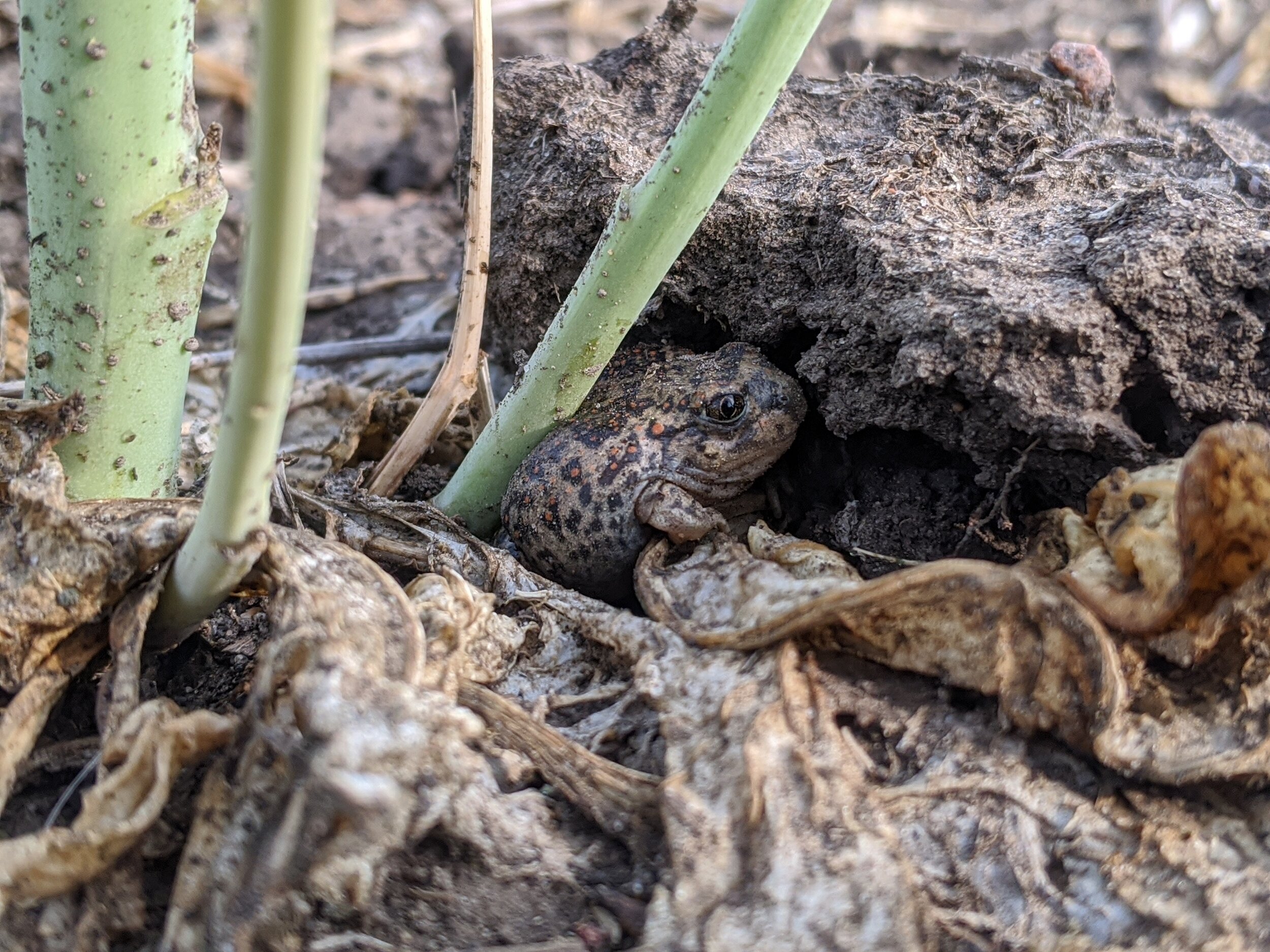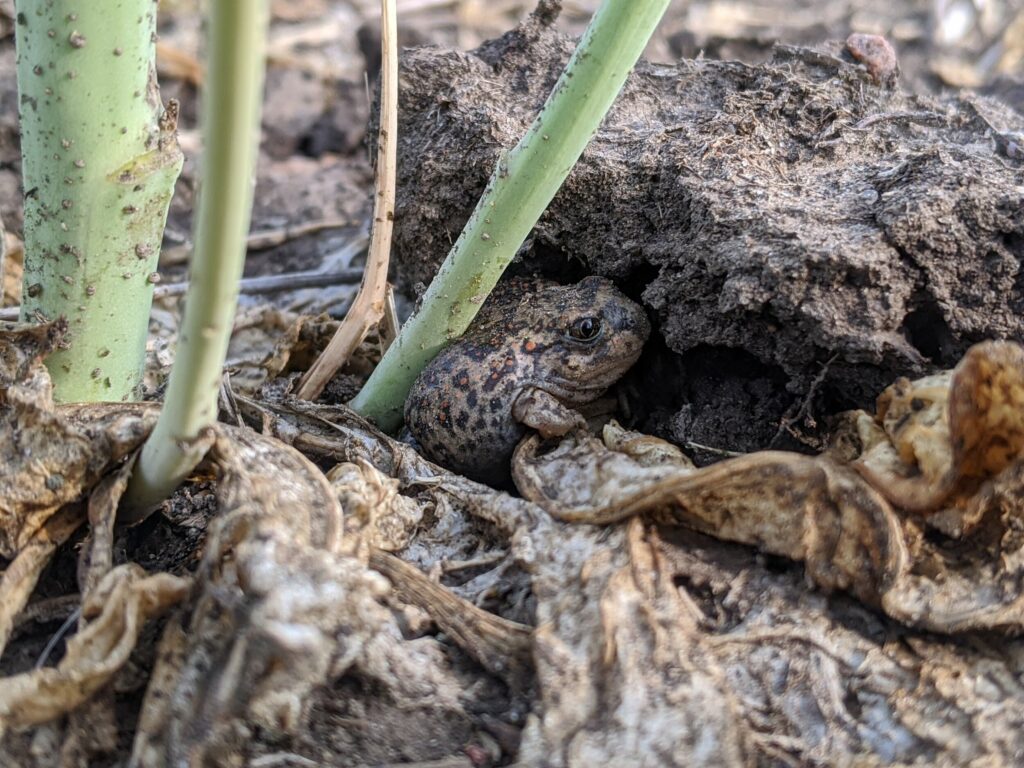Alberta is home to an impressive variety of flora and fauna. One of the fauna groups that tends to get overlooked are amphibians. Amphibians are animals that have life stages that occur both aquatically and terrestrially. One of their most prominent features is their permeable skin that allows them to regulate moisture and gas exchange (breathing!). This awesome adaption also leaves them prone to impacts from pollution, low water quality, desiccation (drying), and disease. Due to this, they are used globally as indicator species and are an excellent tool for gauging ecosystem health.
DID YOU KNOW?
Some salamander species don’t even have lungs and breathe fully through their skin!

Alberta is home to ten amphibians; four frog, four toad, and two salamander species. Out of our ten species, only three are considered to have populations that are secure and not threatened, vulnerable to decline, or data deficient. When considering amphibians around development projects, some species require specific monitoring and mitigation. Executing projects in amphibian habitat hinges on detecting species, determining what mitigation measures to apply, and how to safely salvage amphibians, all in alignment with provincial regulations.
Detection:
Amphibians in Alberta are small and detecting them on a large landscape can be challenging. Some species, like leopard frogs, spend most of their time in the water while others, like the plains spadefoot, can spend months buried underground. Detection of sensitive amphibians comes down to timing. The best time to detect species is during the spring and early summer when our resident species capitalize on warm and wet weather to reproduce. Each species has a distinct mating call and physical surveys, or the deployment of acoustic recorders, can be used to identify species present. Additionally, timing amphibian surveys with precipitation events outside of the breeding season increases the chances of detecting species that beat the heat by burrowing.
Mitigation:
Mitigation measures for amphibians vary with activity type and species, but are generally used to preserve breeding and overwintering habitats. A variety of mitigation measures can be applied when working close to amphibian habitat to reduce road mortalities, interactions with construction activities, and mitigate impact during the breeding season. In 2020, AJM successfully implemented amphibian mitigations for large segments of critical amphibian habitat in conjunction with pipeline activities. Maintaining physical barriers to exclude amphibians from active construction areas while providing cost-effective refuges along exclusion fences not only kept amphibians safe from construction, but also from predators and the elements.
Salvage:
In conjunction with mitigation, amphibians sometimes need to be relocated from the path of a project. Handling and salvage of amphibians takes diligence to minimize stress, eliminate exposure to pollution and pathogens, and find suitable habitat to increase post-salvage survival. As part of AJM’s amphibian salvage protocol, sterile equipment and gloves are used to ensure no transfer of contaminants pass from personnel to the animals, or disease is shared from one individual to another. In cases where amphibians have to be relocated, guidelines from provincial amphibian translocation protocols are always met if not exceeded to ensure the highest chance of successful relocation.
Navigating provincial wildlife regulations can be a big task, and when it comes to our native amphibians, we’re ready to hop to it and assist with your next monitoring or mitigation needs.

